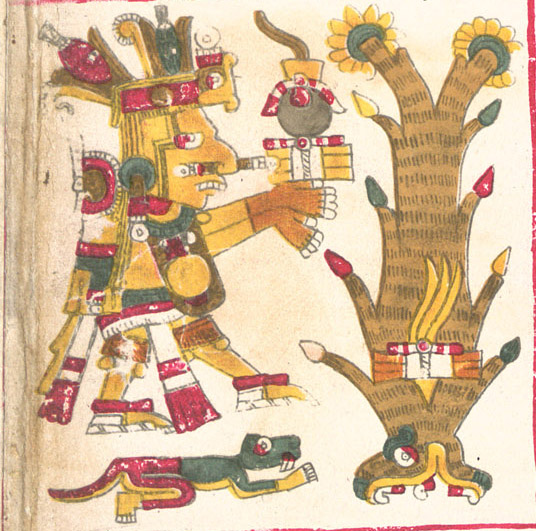|
Piltzintecuhtli
In Aztec mythology, Piltzintecuhtli was a god of the rising sun, healing, and visions, associated with Tōnatiuh. The name means "the Young Prince". It may have been another name for Tōnatiuh, but he is also mentioned as a possibly unique individual, the husband of Xōchiquetzal. He was the lord of the third hour of the night. Piltzintecuhtli was said to be the son of Oxomoco and Cipactonal (the first man and woman that were created) and was seen as a protector of children.Fernández 1992, 1996, p.154. He was identified as the Youthful Sun. Known also as "7 Flower," he was also a god of hallucinatory plants, including mushrooms. He was considered the father of Centeōtl, a deity who was sacrificed in order to bring forth plants. See also * Black Sun (alchemy) In alchemic and Hermetic traditions, suns () are used to symbolize a variety of concepts, much like the sun in astrology. Suns can correspond to gold, citrinitas, generative masculine principles, imagery of "the kin ... [...More Info...] [...Related Items...] OR: [Wikipedia] [Google] [Baidu] |
Piltzintecuhtli
In Aztec mythology, Piltzintecuhtli was a god of the rising sun, healing, and visions, associated with Tōnatiuh. The name means "the Young Prince". It may have been another name for Tōnatiuh, but he is also mentioned as a possibly unique individual, the husband of Xōchiquetzal. He was the lord of the third hour of the night. Piltzintecuhtli was said to be the son of Oxomoco and Cipactonal (the first man and woman that were created) and was seen as a protector of children.Fernández 1992, 1996, p.154. He was identified as the Youthful Sun. Known also as "7 Flower," he was also a god of hallucinatory plants, including mushrooms. He was considered the father of Centeōtl, a deity who was sacrificed in order to bring forth plants. See also * Black Sun (alchemy) In alchemic and Hermetic traditions, suns () are used to symbolize a variety of concepts, much like the sun in astrology. Suns can correspond to gold, citrinitas, generative masculine principles, imagery of "the kin ... [...More Info...] [...Related Items...] OR: [Wikipedia] [Google] [Baidu] |
Centeōtl
In Aztec mythology, Centeōtl (also known as Centeocihuatl or Cinteotl) is the maize deity. ''Cintli'' means "dried maize still on the cob" and ''teōtl'' means "deity".''Nahuatl Dictionary.'' (1997). Wired Humanities Project. University of Oregon. Retrieved September 1, 2012, frolink/ref> According to the Florentine Codex,Miller, ''The Gods and Symbols of Ancient Mexico and the Maya'' (London: Thames and Hudson, 1993) p62 Centeotl is the son of the earth goddess, Tlazolteotl and solar deity Piltzintecuhtli, the planet Mercury. He was born on the day-sign 1 Xochitl. Another myth claims him as the son of the goddess Xochiquetzal. The majority of evidence gathered on Centeotl suggests that he is usually portrayed as a young man (although a debate is still ongoing), with yellow body colouration. Some specialists believe that Centeotl used to be the maize goddess Chicomecōātl. Centeotl was considered one of the most important deities of the Aztec era. There are many common fea ... [...More Info...] [...Related Items...] OR: [Wikipedia] [Google] [Baidu] |

